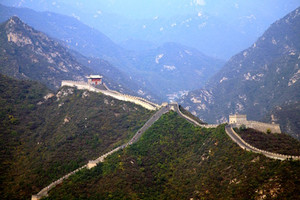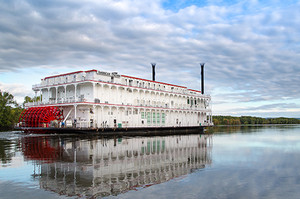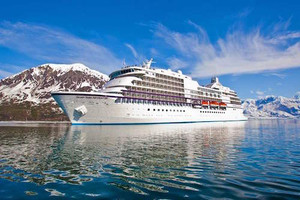
Forget planes, trains and taxis - Ben Hall finds exploration cruising is a hassle-free way of discovering the heart and soul of a culture.
Below the imposing statue in Nagasaki’s Peace Park, local people wander past the 10 metre figure under a grey sky as a handful of tourists gather in front to take photographs of the city’s most famous attraction.
Given the city’s history, it’s not surprising that it’s quiet in this symbolic park but within 10 minutes a large group of school children is ushered through to the statue by their teacher. Shortly afterwards more class-sized groups of kids enter the scene with colourful balloons along with a few marching bands and the sombre mood changes quickly.
Within half an hour, thousands of schoolkids assemble in orderly fashion and one of the teachers, in typical Japanese fashion, apologises to us for the “intrusion” and says they’re about to start a peace rally to remember the atomic bombing of Nagasaki on August 9, 1945, that wiped out the city and killed at least 74,000 people.
Far from being a gloomy event, the children are encouraged to sing and clap and this is clearly a celebration of life by the city’s new generation with a respectful view to the past.
It sums up modern life in Nagasaki and is the type of cultural, and unexpected, encounter which can be experienced on a small ship exploration cruise.
We were on a 10-night voyage which began and finished in Kobe and took in 11 destinations in south-western Japan, along with the fascinating ancient South Korean city of Gyeong-ju.
This is not the type of cruise where you flop by the pool and order cocktails, work on a tan, and then dress for a formal dinner. Every morning and most afternoons features a tour (included in the cruise price) which offers a combination of sightseeing, cultural experiences and optional shopping opportunities for those who want to contribute to the local economy. It’s a busy and active cruise and the dress code is casual throughout, and the only fashion taboo is wearing swimwear in the main dining room at night.
Even before we boarded, we were whisked off to one of the main tourist sights near Kobe, Himeji Castle, which was built in 1346 to protect against local shoguns and today is a UNESCO World Heritage Site which stands as the best preserved example of Japanese medieval architecture.
Nagasaki was perhaps the highlight of this cruise, thanks to the local schoolkids, and the fact that the ship was able to dock right in the downtown area which meant exploring independently on foot was also an option. And right across the road was one of Nagasaki’s most enduring attractions, Glover Garden, which is a neighbourhood of nine western-style homes built by foreigners during the Meiji Period (1868-1912). Glover Mansion, built by Scotsman Thomas Glover, adorns the hilly area and is romanticised as the home of the fictitious Madame Butterfly from Puccini’s opera. These days Nagasaki locals head to the gardens and rent Victorian-era clothes to step back in time and walk the cobbled streets which link the homes.
As uplifting as Nagasaki is, it’s not to say the other destinations weren’t as inspiring and each night during social hour in the cozy club lounge, debate over which-place-is-best produced different opinions over cocktails.
From the ancient rain forest of the remote island of Yakushima, the mythological birthplace of Godzilla’s frequent foe Mothra, to the “Samurai City” of Kurashiki with its medieval city built by a pretty canal, to sipping tea with a fourth-generation abbot, Gyogon Asano, and his family at the “Flying Squirrel Temple”, to watching the deer of Miyajima Island literally pickpocket tourists as they photograph the world famous O-torii Gate in front of the Itsukushima Shrine, each day revealed a fascinating slice of traditional Japanese life.
In between was the serene beauty of world famous gardens in Takamatsu, Okoyama and Uwajima, some of the most beautiful temples and shrines in the world and, very importantly, local insights into culture and great Japanese traditional food.
At times it felt a little overwhelming, with the sheer weight of the sights, sounds and smells of a fascinating part of the world combining to leave a strong impression on even the most-travelled souls. But the reward is an experience which is far removed from the traditional cruise, to destinations which are difficult to access by any other means.
For more information on Japan, visit www.jnto.org.au
For the latest exchange rate on the Yen, visit our partners at XE.com
- By:
- Ben Hall





























